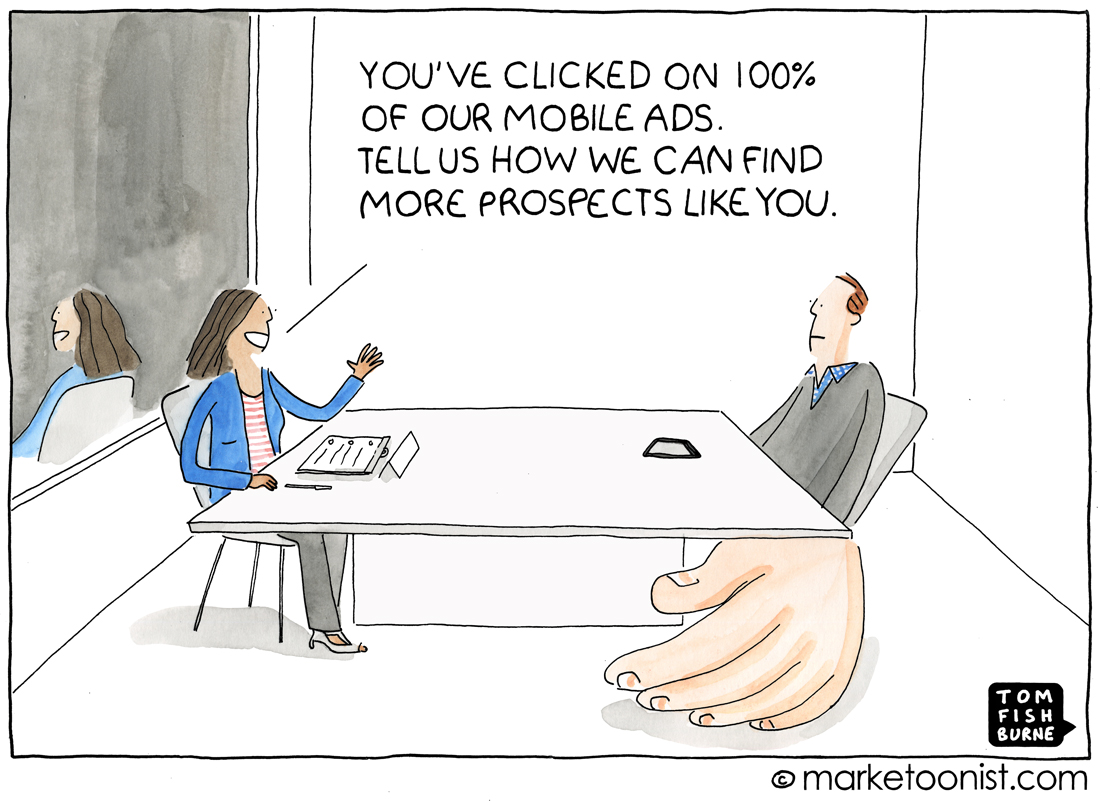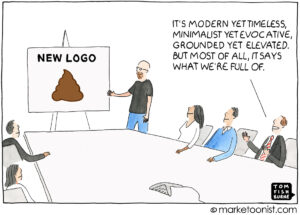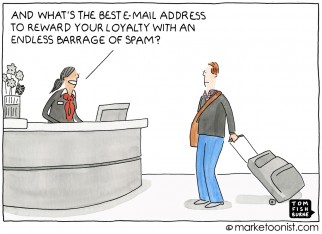I was struck by the recent research that 60% of clicks on mobile banner ads are accidental. The main contributing factor was identified as fat finger syndrome.
With mobile on track to become the third largest advertising medium, accounting for 12% of all ad spend, that’s an enormous disconnect.
Of course it’s not fat fingers that are to blame. It’s the state of mobile design.
I stumbled across some mobile ad analysis by UK agency, EdgeThreeSixty. They diagnosed the root cause of fat finger syndrome as a conflict of interest between the three primary stakeholders: users, advertisers, and sites hosting the ads.
The current state of mobile advertising is bad for users (as we’ve all experienced) and ultimately bad for advertisers (through poor conversion rates). But in the near term, it’s good for host sites, which benefit from generating as many clicks as possible. EdgeThreeSixty calls this a “lose-lose-win” design.
In the long run, any marketing approach that is a “lose” for consumers isn’t sustainable. In data-driven marketing, we have to be ever mindful which stakeholders we’re optimizing for. If it’s not for the long-term benefit of the actual user, it’s a fail.
I like their summary of what constitutes win-win-win design in mobile:
“Ads need to be better integrated with the actual content on a mobile web page or app, not by way of deceptively concealment or disguise, but by way of relevance and design.”
We’re in an interesting stage of mobile advertising and it will take some trial-and-error to get to win-win-win design.
But if advertisers and publishers don’t find the “win” for consumers, consumers will find it on their own, with ad blockers. And that’s ultimately a lose for advertisers and for host sites — a “win-lose-lose” design.
I’d love to hear your thoughts.



John Miglautsch says
There is another lose in the mobile ad arena. After I accidentally click through to something I’m not interested in… I am retargeted for weeks. My wife asked, “Do the advertisers have to pay for these?” I assured her that they did. Lose-Lose-Win-Lose-Lose (if you value your time). Thanks Tom!
Jason Cross says
It’s so true. I follow a few newspapers on twitter for headline news and one of them (The Independent – ironically it has just gone entirely digital) not only scatters ads throughout the copy of a story you want to read (often causing unintentional clicks as you scroll down the page), but has now started obscuring the story with pop–ups over the top with THE SMALLEST little “x” to get rid of the ad so you can get back to reading the story. Of course, >50% of the time, when clicking the “x” I actually click the ad by mistake.
Definitely a lose-lose-win. Except that now I am unfollowing the paper and they will lose as I stop going to their website at all…